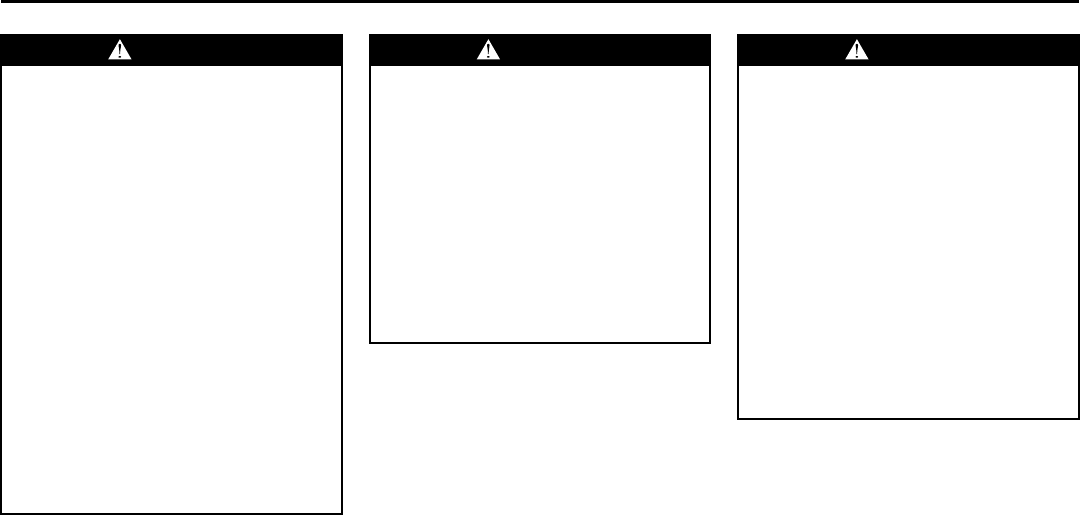
1-34
SEATS AND RESTRAINT SYSTEMS
78J00-03E
WARNING
You can be severely injured or killed
in a crash if you are not wearing your
safety belt – even if you have airbags.
Wearing your safety belt during a
crash helps reduce your chance of
hitting things inside the vehicle or
being ejected from it. Airbags are
“supplemental restraints” to the
safety belts. All airbags are designed
to work with safety belts but do not
replace them.
Frontal airbags for the driver and
right front passenger are designed to
deploy in moderate to severe frontal
and near frontal crashes. They are
not designed to inflate in rollover,
rear crashes, or in many side
crashes. And, for some unrestrained
occupants, frontal airbags may pro-
vide less protection in frontal
crashes than more forceful airbags
have provided in the past.
(Continued)
WARNING
(Continued)
Roof-mounted rollover airbags are
designed to inflate in moderate to
severe crashes where something hits
the side of your vehicle, during a
vehicle rollover, or in a severe frontal
impact. They are not designed to
inflate in rear crashes. If your vehicle
has roof-mounted airbags, they are
designed to provide both side impact
protection and rollover protection.
Everyone in your vehicle should wear
a safety belt properly – whether or
not there is an airbag for that person.
WARNING
Both frontal and roof-mounted roll-
over airbags inflate with great force,
faster than the blink of an eye. If you
are too close to an inflating airbag, as
you would be if you were leaning for-
ward, it could seriously injure you.
Safety belts help keep you in position
for airbag inflation before and during
a crash. Always wear your safety belt
even with frontal airbags. The driver
should sit as far back as possible
while still maintaining control of the
vehicle. Occupants should not lean
on or sleep against the door in the
first or second row seats, or the rear
windows in the third row seat, if your
vehicle has roof-mounted rollover air-
bags.


















